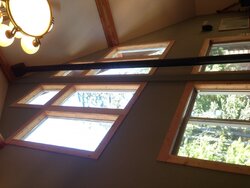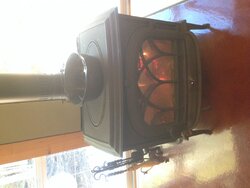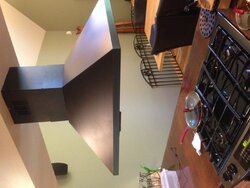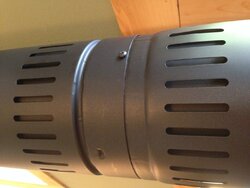


 We have installed a Jotul Oslo wood stove in our home with Security Chimney DL stove pipe. The stove burns clean and hot and appears to be operating normally.
We have installed a Jotul Oslo wood stove in our home with Security Chimney DL stove pipe. The stove burns clean and hot and appears to be operating normally. Jotul Oslo stove with outside piped fresh air connected to 20 feet of Security DL pipe.
The pipe has been suspended from the roof box and each piece has been twist locked together with a single set screw per the manufacture's recommendations.
Unfortunately when we turn on our kitchen range hood vent it draws smoke into the residence. When the hood vent is on a large amount of visible smoke in drawn from the chimney pipe seams. If the Hood vent is on for more then a few minutes the smoke fills the home and activates the smoke alarms.
Contributing factors may include the length of the DL pipe, strength of hood vent and the house is very air tight with spray foam wall insulation.
Anyone have any thoughts for a fix?


